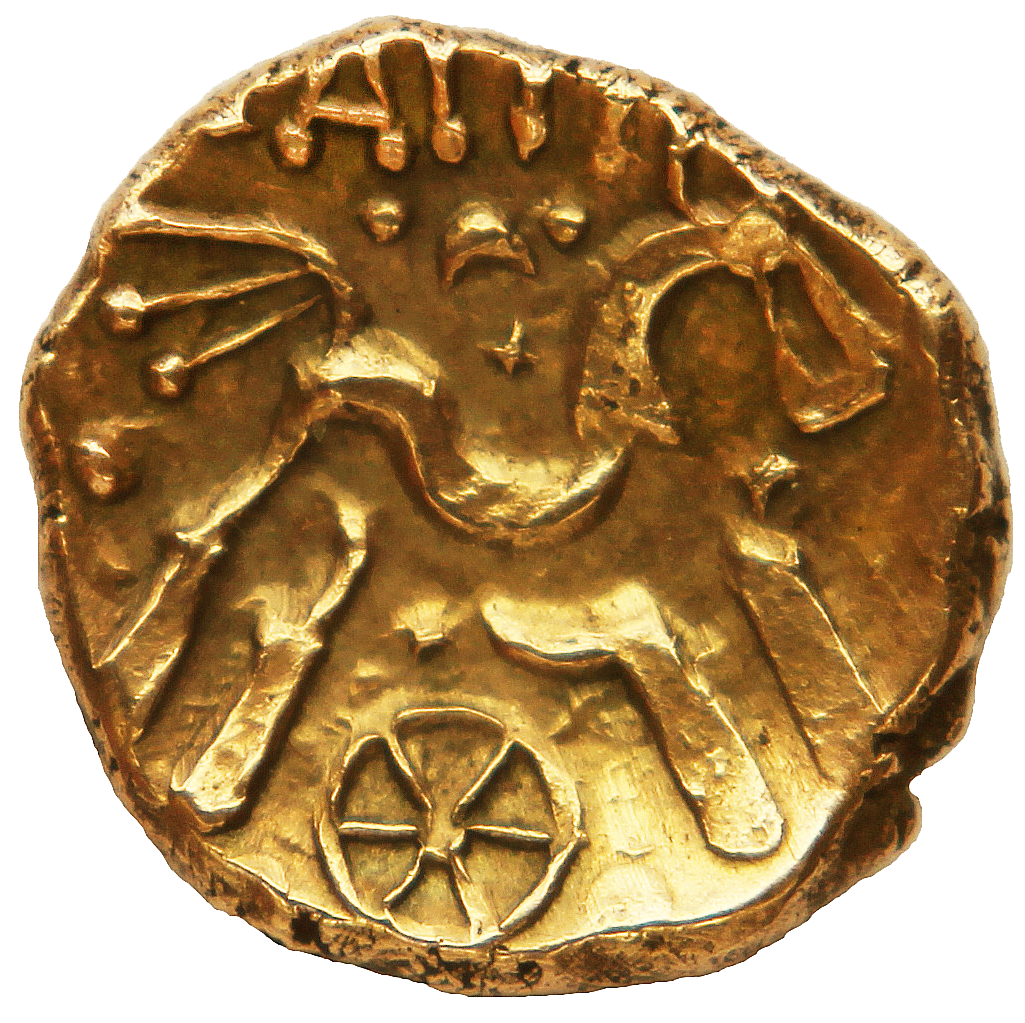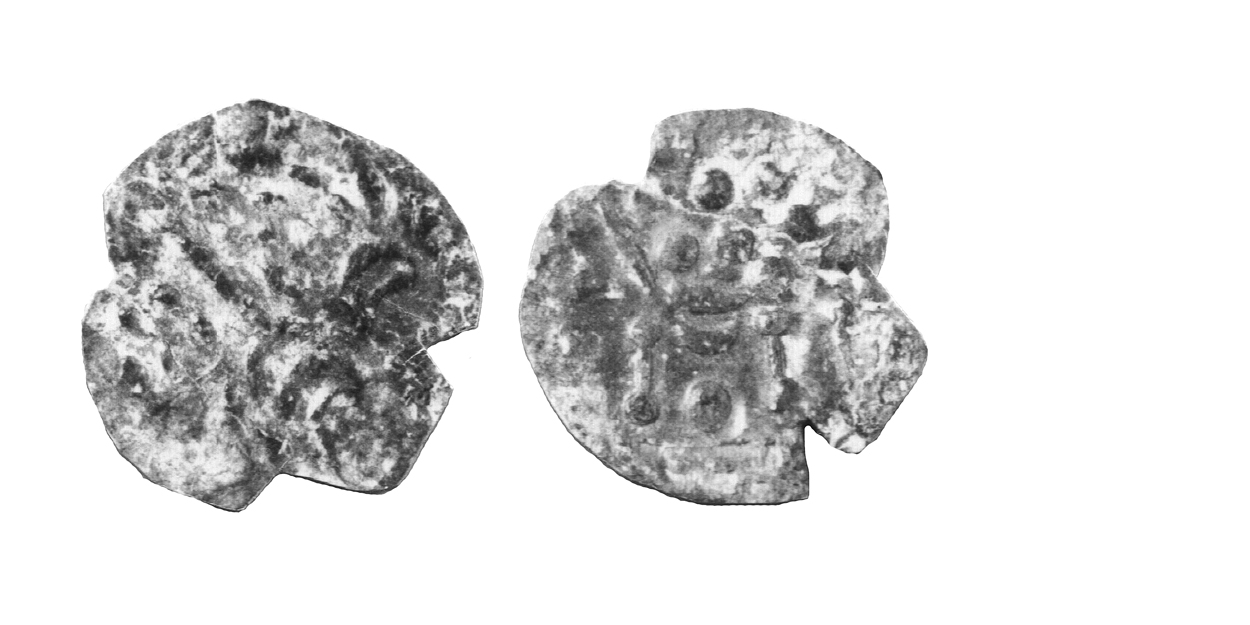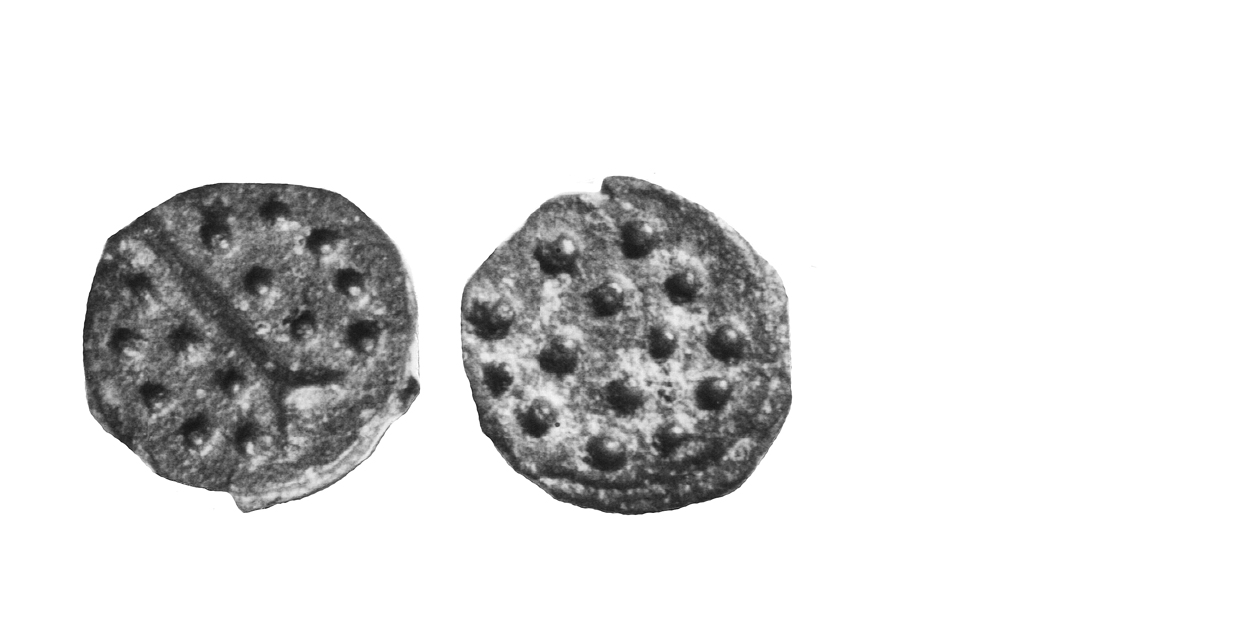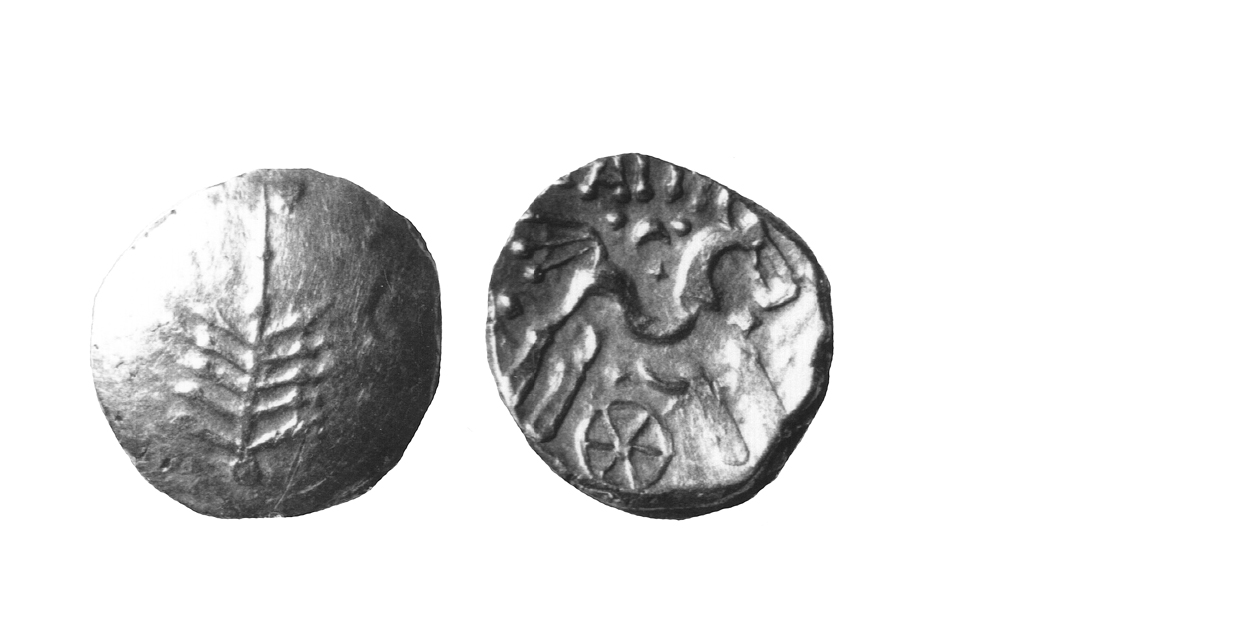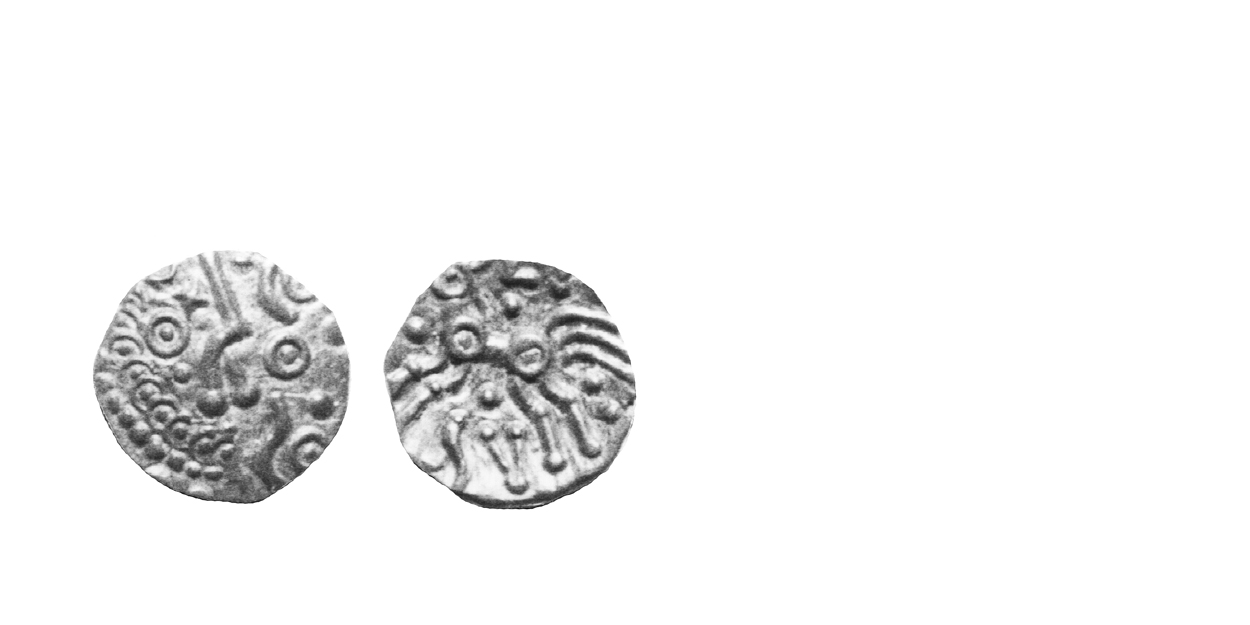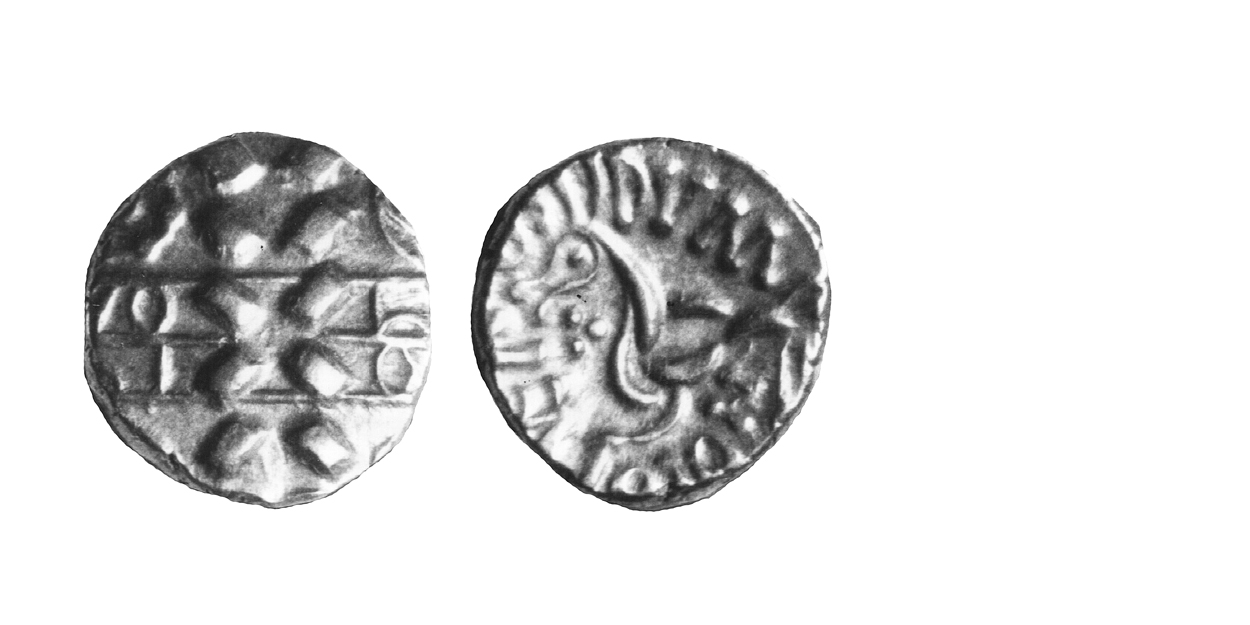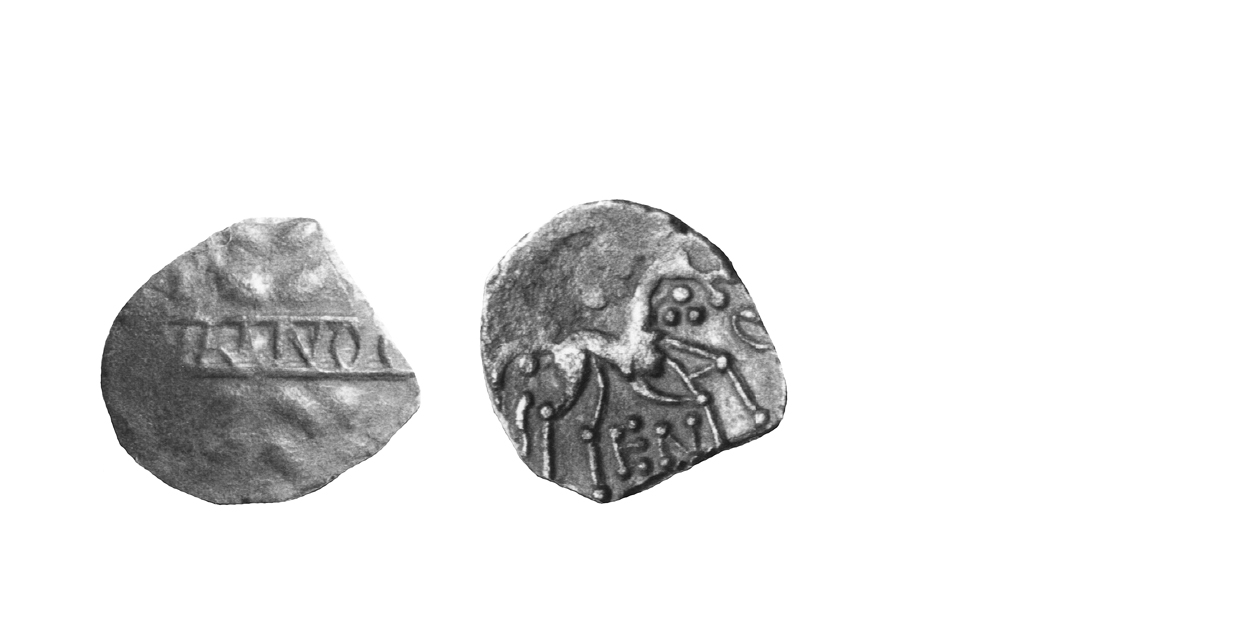
History
Later Coinages (Info)
Coinage in the Region of the Peripheral Tribes 10-61 A.D.
Durotriges
Sometime probably after the turn of the millennium, the Durotriges stopped striking bronze staters and introduced a cast bronze coinage. The date is difficult to determine and there may have been a time gap between the two coinages. The first of the crude cast pieces displayed line-and-pellet motifs mimicking the struck bronzes. The image now only faintly echoed the Apollo head and horse derived from the staters of Philip of Macedon. The designs on the last of the cast bronzes were extremely simple just lines and pellets. The Durotrigan coinage probably came to an end sometime in the mid to late forties A.D., after Vespasian's invasion of their territory. Durotrigan cast bronzes do, however, occur in quite late Roman contexts.
Dobunni
The Dobunni continued to strike gold and silver with the names of their leaders (79). The gold staters carried an immobilized type – all had the branched emblem on the obverse and a Celticized horse on the reverse. The names ANTEDRIG, COMUX, EISV, CATTI and INAM appeared in succession above the horse, and silver units were struck with the names ANTED and EISV. The tribe's coinage would have come to an end in the late forties, as the Roman army marched westward towards Wales.
Corieltauvi
The Corieltauvi also continued to strike gold and silver with inscriptions, although it is uncertain whether all are the names of rulers. On many coins two or even three words appeared and though it has long been assumed these indicate joint rulers, this has never been established with certainty. The tribe's coinage would have come to an end in the mid to late forties as the Romans moved into their territory on the way to Brigantia.
Roman Britain
There has always been some question whether the coins continued to circulate in Britain after the sixties A.D. Celtic coins have the annoying habit of turning up during archaeological excavations in Roman contexts well into the Second Century A.D. These stragglers, probably considered curiosities in later Roman times, need not have represented circulating money.
The experience of the Gaulish coinage after the Gallic War may help explain the end of Celtic coinage in Britain. Celtic silver coins were struck and circulated in Gaul as small change for a while after Caesar's invasion but gold coinage was largely, if not totally, suppressed. The Romans confiscated gold, leaving the Gallic tribes only lesser-value metals. Probably, the same confiscation occurred in Britain and certainly no gold coins were struck. Silver and bronze coinage would probably have been suppressed after the Boudiccan revolt, and thus Celtic coinage would have come to an end after 61 A.D.
Next section – Denominations
